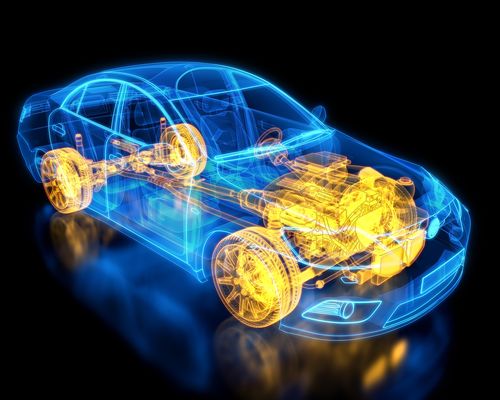Gearing up for the next generation of Europe's cars
More than 20 partners from all areas of the European car industry worked together in the EUREKA ITEA Cluster EAST-EEA project to develop a common software interface for electronic devices to be used in all cars from 2009. This will make the next generation of vehicles quicker to design and cheaper to bring to market, while maintaining high quality standards.
Electronics are being used increasingly to improve safety and comfort in all areas of the car – from engine, steering and braking control to communications, entertainment and man-machine interfaces. The problem is that, when a new component is introduced, not only must it be tested thoroughly but so must all existing components to ensure none has been adversely affected.
As a result, introducing new electronics is increasingly expensive and development cycles are getting longer. Carmakers, component suppliers and academics collaborated in the EAST-EEA (electronics architecture and software technology-embedded electronic architecture) project to create a solution giving Europe a competitive edge in car development.
Plug and play technology
The project had three aims – to create the standard middleware, define a high-level language to make it accessible and develop specialist tools, including test tools and demonstrators. EAST-EEA has now created a new software architecture that allows easier integration of new electronics in cars through ‘plug-and-play' technology, dramatically reducing development time and costs to market.
“We set out to create a standard middleware for cars that integrates all of the different electronic systems, subsystems, modules and components delivered by different suppliers into the complete network of a vehicle system,” explains Joseph Beretta of PSA Peugeot Citroen.
“The challenge is to manage efficiently the constantly increasing complexity of electronically controlled functions in today's and tomorrow's vehicles. The EAST-EEA architecture, its software engineering methods and their validation are essential for this advanced technology. It not only means that new systems such as new electronic steering systems are quicker to design and to market, it also guarantees a level of quality which is very important if European cars are to be competitive.”
Massive undertaking
EAST-EEA was a massive undertaking, occupying 250 person-years, a budget of €40 million, and partners from four countries (France, Germany, Italy and Sweden) including car manufacturers, equipment suppliers and academic and research institutions. It was awarded the ITEA Achievement Award in 2004.
Although the project has now ended, the work continues. The results of EAST-EEA are being used as the basis for the EU Sixth Framework Programme project EASIS and the car industry's automotive open system architecture (AUTOSAR) initiative – a direct spin-off from EAST-EEA that is expected to produce its first results by 2010.
More information:
Joseph Beretta, PSA Peugeot Citroën SA, Route de Gisy
F-78943 Vélizy-Villacoublay Cedex, France
Phone: +33 1 57 59 20 41; Fax: +33 1 57 59 30 66;
Email: joseph.beretta@mpsa.com
Note to editors:
The EUREKA Initiative aims to strengthen European competitiveness by promoting cross-border, market-oriented, collaborative R&D. It enables industry and research institutes from 35 member countries and the EU to collaborate in a bottom-up approach to developing and exploiting innovative technologies. EUREKA is marking 20 years of pan-European innovation in 2005. Since 1985, substantial public and private funding has been deployed through this intergovernmental network to support leading edge R&D.
ITEA was established as a EUREKA strategic initiative in 1999 to help develop software-intensive systems. This Cluster is responsible for the creation of crucial middleware and preparation of standards laying the foundations for the next generation of European digital products, systems and services.
More information about EUREKA may be found at: http://www.eureka.be/, while additional information about 20 years of EUREKA can be found at: http://www.eureka-20years.net/ .
Fuller information about ITEA may be found at: http://www.itea-office.org/


